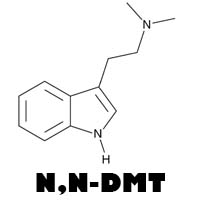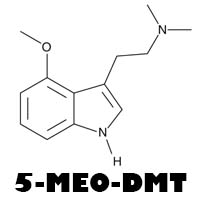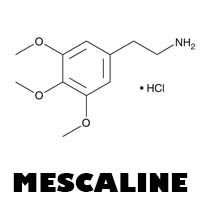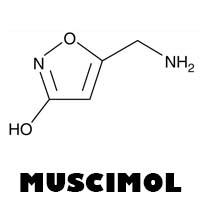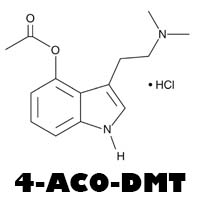How to Choose the Right Psychedelic for You
Choosing the right psychedelic can be a deeply personal decision, influenced by your goals, experience level, and personal preferences. With a variety of options available, it's important to understand the unique characteristics and effects of each substance. This guide will help you make an informed choice about which psychedelic might be best for you.
1. Understand Your Goals
Before choosing a psychedelic, consider what you hope to achieve from the experience. Are you seeking spiritual insights, emotional healing, creative inspiration, or simply a new perspective? Clarifying your intentions can guide you toward the most suitable substance.
2. Consider Your Experience Level
Your experience with psychedelics will also influence your choice. Beginners might prefer substances with a gentler onset and shorter duration, while more experienced users might be comfortable with more intense and longer-lasting experiences.
3. Research Different Psychedelics
Understanding the effects, benefits, and risks of various psychedelics is crucial for making an informed decision. Here are some common options:
a. Psilocybin (Magic Mushrooms)
Psilocybin mushrooms are known for their ability to induce profound changes in perception, mood, and cognition. They are often recommended for their relatively gentle and natural experience.
Benefits: Emotional healing, spiritual insights, enhanced creativity.
Risks: Nausea, anxiety, and potential for overwhelming experiences.
b. LSD (Lysergic Acid Diethylamide)
LSD is a powerful synthetic psychedelic that produces vivid visual hallucinations and altered thought processes. It is known for its long duration and intense effects.
Benefits: Enhanced creativity, problem-solving abilities, spiritual experiences.
Risks: Anxiety, paranoia, and potential for persistent hallucinations.
c. MDMA (3,4-Methylenedioxymethamphetamine)
MDMA, also known as Ecstasy or Molly, is famous for its empathogenic effects, enhancing feelings of empathy and emotional connection.
Benefits: Emotional openness, improved social connections, therapeutic potential for PTSD.
Risks: Dehydration, hyperthermia, and potential neurotoxicity with frequent use.
d. DMT (Dimethyltryptamine)
DMT is a powerful psychedelic that induces short, intense experiences. Often referred to as the "spirit molecule," it produces vivid, otherworldly visions.
Benefits: Deep spiritual and personal insights.
Risks: Intensity can be overwhelming; should be used with caution.
e. Ayahuasca
Ayahuasca is a traditional Amazonian brew that combines DMT with MAO inhibitors, leading to extended and profound psychedelic experiences.
Benefits: Emotional and spiritual healing, treatment for depression and addiction.
Risks: Intense physical and emotional reactions, such as vomiting and diarrhea.
f. Mescaline (Peyote and San Pedro Cactus)
Mescaline is a naturally occurring psychedelic found in peyote and San Pedro cacti. It produces visual and auditory hallucinations, euphoria, and altered states of consciousness.
Benefits: Spiritual insights, enhanced creativity, and personal growth.
Risks: Nausea and anxiety; setting and support are crucial.
4. Assess Your Mental and Physical Health
Before using any psychedelic, it's important to consider your mental and physical health. Some psychedelics can exacerbate pre-existing mental health conditions or interact with medications. Consult with a healthcare professional if you have any concerns.
5. Create a Safe and Supportive Environment
The setting in which you use psychedelics plays a significant role in your experience. Ensure you are in a safe, comfortable, and familiar environment, and consider having a trusted friend or trip sitter present to provide support if needed.
6. Start with a Low Dose
Especially if you are new to psychedelics, starting with a low dose can help you gauge your sensitivity and response to the substance. Gradually increasing the dose in subsequent experiences can help you build confidence and familiarity.
7. Integration and Reflection
After your psychedelic experience, take time to integrate and reflect on the insights gained. Journaling, meditation, and discussing your experience with trusted individuals can help you make sense of and apply these insights to your daily life.
Conclusion
Choosing the right psychedelic involves understanding your goals, researching different substances, and considering your experience level and health. By approaching psychedelic use with intention, preparation, and care, you can ensure a safe and transformative experience. Remember to integrate and reflect on your experiences to maximize their benefits.
Suggested Images for the Blog Post
- Psilocybin: Photos of psilocybin mushrooms in their natural habitat.
- LSD: Images representing LSD blotters and psychedelic art.
- MDMA: Visuals of MDMA crystals and therapeutic settings.
- DMT: Pictures of DMT crystals and traditional Amazonian ceremonies.
- Ayahuasca: Images of Ayahuasca brews and Amazonian rituals.
- Mescaline: Photos of peyote and San Pedro cacti.
